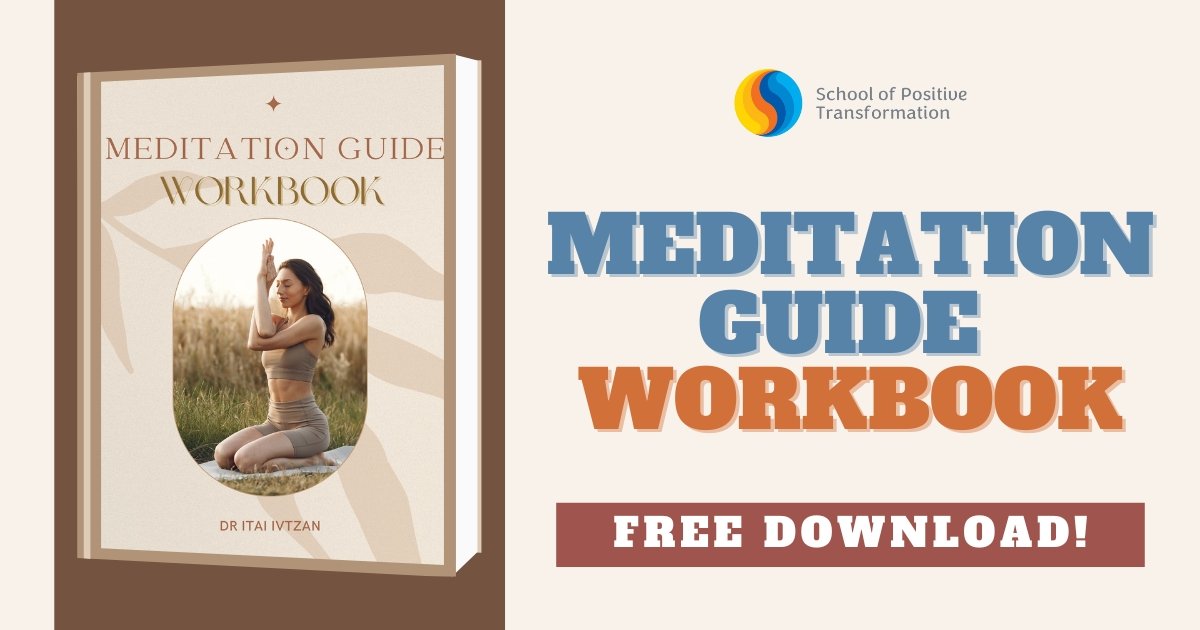Dr Itai Ivtzan
The art of Mindfulness Meditation is the practice of focusing on the present moment while calmly observing your thoughts and feelings can reduce stress, increase self-awareness, and deepen empathy with others. This term is frequently used in spiritual jargon and must be fully understood. Most of the time we are away from the actual experience, from the moment. Whatever activity we are engaged in, our mind tends to wander and in fact takes us somewhere else. This is where presence becomes relevant.
But before you continue you might like to consider our free worksheet on exploring “Meditation Guide”. Please download this worksheet here.
Being present means being fully connected to whatever you do, bringing one hundred percent of your attention and concentration to the experience. Your ego concepts are in the habit of taking over your awareness, and have the power to pull your attention away from the experience and prompt a thought pattern. When your attention is fully focused on the moment, on what is actually happening, no space is left for your ego concepts to interfere with the experience. Through meditation, you have acquired the ability to be present, and your thoughts and expectations no longer divert your attention, which now stays wholly with the experience.
Imagine having a conversation with a friend, and note that during much of your communication you are actually not present. When another person speaks we rarely give the speaker our full attention. We think about the next thing we are going to say, we imagine possible responses, we estimate the time needed for them, or even think about dinner. The practice of meditation may not altogether stop certain ego concepts from interfering with the conversation, but it does help you keep your attention focused and not let it drift to the thoughts that have been triggered. Presence, therefore, means being all there, bringing all of your awareness to the experience.
That would stand for a meditative communication. The art of presence is a meditative experience you can practice with any kind of activity. Experimenting with activities into which we normally bring very little awareness is particularly interesting. Take walking, for example. We usually see walking as a means to an end.
The only thing that matters is the end point – arriving. We think of our plans, worries, expectations, and the place we are heading for. For thousands of years, Buddhist monks in monasteries have practiced the walking meditation technique. For most of us it is a convenient technique because walking is something people experience frequently, and could therefore be an invitation to meditate regularly. In walking meditation we use walking as our focal point, our anchor for attention. To practice this technique, walk slowly and bring your full awareness to your moving body.
Practical Exercise: Walking meditation
Next time you walk – at home or outside – practice the walking meditation. When you begin to walk, breathe deeply and imagine the air penetrating as far as your feet and keep your attention focused on your soles. Let your awareness stay with the continuous up and down movement of your feet. Notice first your heel making contact with the ground, and the way the rest of your foot reaches forward all the way to your toes, and then lifts up again and moves in the air. Let your awareness spread to your legs and thighs, observe the way your skin touches your clothes, the temperature, the texture, any sensation you recognise. If you find your mind has wandered, immediately bring your attention back to your feet and legs, smilingly.
The art of Mindfulness Dr Itai Ivtzan is passionate about the combination of psychology and spirituality. It makes his heart sing. Isn’t this an amazing prospect? His main areas of research are mindfulness, spirituality, and wellbeing. Dr. Ivtzan is confident that mindfulness meditation has the power to change individuals – in fact, whole societies – for the better. Accordingly, he has been investing much time in studying mindfulness academically, writing books about it, teaching it, and running meditation teacher training online courses. Offering the gift of mindfulness to others is a deeply rewarding experience; would you like to learn how to teach mindfulness? Check out his meditation certification online to find out more.
Ready to deepen your practice of mindfulness and be more present in your daily life? Download our Meditation Guide Workbook to support your journey, offering exercises that help you cultivate presence in every moment. Whether you’re new to mindfulness or looking to enhance your practice, this workbook will guide you toward a deeper connection with yourself and the world around you.






